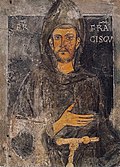Franciscans
Ordo Fratrum Minorum | |
 A cross, Christ's arm and Saint Francis's arm, a universal symbol of the Franciscans[1] | |
| Abbreviation | OFM |
|---|---|
| Formation | 24 February 1209 |
| Founder | Francis of Assisi |
| Type | Mendicant Order of Pontifical Right for men[2] |
| Headquarters | Via S. Maria Mediatrice 25, 00165 Rome, Italy |
Membership | 12,476 members (8,512 priests) as of 2020[2] |
Motto | Pax et bonum (Latin) Peace and [all] good |
Minister General | Massimo Fusarelli[2] |
Parent organization | Catholic Church |
| Subsidiaries | Secular Franciscan Order (1221) Third Order of Saint Francis (1447) |
| Secessions | OFM (1897) OFM Conventual (1517) OFM Capuchin (1520) |
Formerly called | Order of Observant Friars Minor[2] |

The Franciscans are a group of related
Francis began preaching around 1207 and traveled to
The extreme poverty required of members was relaxed in the final revision of the Rule in 1223. The degree of observance required of members remained a major source of conflict within the order, resulting in numerous secessions.[5][6] The Order of Friars Minor, previously known as the "Observant" branch, is one of the three Franciscan First Orders within the Catholic Church, the others being the "Conventuals" (formed 1517) and "Capuchins" (1520). The Order of Friars Minor, in its current form, is the result of an amalgamation of several smaller orders completed in 1897 by Pope Leo XIII.[7] The latter two, the Capuchin and Conventual, remain distinct religious institutes within the Catholic Church, observing the Rule of Saint Francis with different emphases. Conventual Franciscans are sometimes referred to as minorites or greyfriars because of their habit. In Poland and Lithuania they are known as Bernardines, after Bernardino of Siena, although the term elsewhere refers to Cistercians instead.

Name and demographics

The name of the original order, Ordo Fratrum Minorum (Friars Minor, literally 'Order of Lesser Brothers') stems from Francis of Assisi's rejection of luxury and wealth. Francis was the son of a rich cloth merchant, but gave up his wealth to pursue his faith more fully. He had cut all ties that remained with his family, and pursued a life living in solidarity with his fellow brothers in Christ.[8] In other words, he abandoned his life among the wealthy and aristocratic classes (or Majori) to live like the poor and peasants (minori). Francis adopted the simple tunic worn by peasants as the religious habit for his order, and had others who wished to join him do the same. Those who joined him became the original Order of Friars Minor.[1]
First Order
The First Order or the Order of Friars Minor, or Seraphic Order
The modern organization of the Friars Minor comprises three separate families or groups, each considered a religious order in its own right under its own minister General and particular type of governance. They all live according to a body of regulations known as the Rule of Saint Francis.[10]
- The Order of Friars Minor, also known as the Observants, are most commonly simply called Franciscan friars,[10] official name: Friars Minor (OFM).[12]
- The Order of Friars Minor Capuchin or simply Capuchins,[10] official name: Friars Minor Capuchin (OFM Cap.).[12]
- The Order of Friars Minor Conventual or simply Minorites,[10] official name: Friars Minor Conventual (OFM Conv.).[12]
Second Order
The Second Order, most commonly called Poor Clares in English-speaking countries, consists of only one branch of religious sisters. The order is called the Order of St. Clare (OSC), but prior to 1263 they were called "The Poor Ladies", "The Poor Enclosed Nuns", and "The Order of San Damiano".[13]
Third Order
The Franciscan third order, known as the Third Order of Saint Francis, has many men and women members, separated into two main branches:
- The religious institutes.
- Members of the Third Order Regular (TOR) live in religious communities under the traditional religious vows. They grew out of the Secular Franciscan Order.
The 2013 Annuario Pontificio gave the following figures for the membership of the principal male Franciscan orders:.[14]
- Order of Friars Minor (OFM): 1,915 communities; 12,476 members (including 8,512 priests)
- Franciscan Order of Friars Minor Conventual (OFM Conv.): 572 communities; 3,981 members (including 2,777 priests)
- Franciscan Order of Friars Minor Capuchin (OFM Cap.): 1,542 communities; 10,355 members (including 6,796 priests)
- Third Order Regular of Saint Francis (TOR): 147 communities; 813 members (including 581 priests)
The coat of arms that is a universal symbol of Franciscan "contains the
History
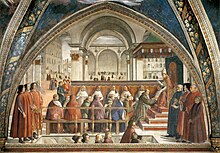
Beginnings
A sermon Francis heard in 1209 on Matthew 10:9 made such an impression on him that he decided to devote himself wholly to a life of apostolic poverty. Clad in a rough garment, barefoot, and, after the Evangelical precept, without staff or scrip, he began to preach repentance.[15]
He was soon joined by a prominent fellow townsman, Bernard of Quintavalle, who contributed all that he had to the work, and by other companions, who are said to have reached the number of eleven within a year. The brothers lived in the deserted leper colony of Rivo Torto near Assisi; but they spent much of their time traveling through the mountainous districts of Umbria, always cheerful and full of songs, yet making a deep impression on their hearers by their earnest exhortations. Their life was extremely ascetic, though such practices were apparently not prescribed by the first rule which Francis gave them (probably as early as 1209) which seems to have been nothing more than a collection of Scriptural passages emphasizing the duty of poverty.[16]
In spite of some similarities between this principle and some of the fundamental ideas of the followers of
Francis's last years
Francis had to suffer from the dissensions just alluded to and the transformation they effected in the original constitution of the brotherhood making it a regular order under strict supervision from Rome. Exasperated by the demands of running a growing and fractious Order, Francis asked
In the external successes of the brothers, as they were reported at the yearly general chapters, there was much to encourage Francis. Caesarius of Speyer, the first German provincial, a zealous advocate of the founder's strict principle of poverty, began in 1221 from Augsburg, with twenty-five companions, to win for the Order the land watered by the Rhine and the Danube. In 1224 Agnellus of Pisa led a small group of friars to England. The branch of the Order arriving in England became known as the "greyfriars".[21] Beginning at Greyfriars at Canterbury, the ecclesiastical capital, they moved on to London, the political capital, and Oxford, the intellectual capital. From these three bases the Franciscans swiftly expanded to embrace the principal towns of England.
Dissensions during Francis's life
The controversy about how to follow the Gospel life of poverty, which extends through the first three centuries of Franciscan history, began in the lifetime of the founder. The ascetic brothers Matthew of
Custody of the Holy Land
After an intense apostolic activity in Italy, in 1219 Francis went to
The Franciscan
Development after Francis's death
Development to 1239
Elias was a lay friar, and encouraged other laymen to enter the order. This brought opposition from many ordained friars and ministers provincial, who also opposed increased centralization of the Order. Gregory IX declared his intention to build a splendid church to house the body of Francis and the task fell to Elias, who at once began to lay plans for the erection of a great basilica at Assisi, to enshrine the remains of the Poverello.[19] In order to build the basilica, Elias proceeded to collect money in various ways to meet the expenses of the building. Elias thus also alienated the zealots in the order, who felt this was not in keeping with the founder's views upon the question of poverty.
The earliest leader of the strict party was Brother Leo, a close companion of Francis during his last years and the author of the Speculum perfectionis, a strong polemic against the laxer party. Having protested against the collection of money for the erection of the basilica of San Francesco, it was Leo who broke in pieces the marble box which Elias had set up for offertories for the completion of the basilica at Assisi. For this Elias had him scourged, and this outrage on St Francis's dearest disciple consolidated the opposition to Elias. Leo was the leader in the early stages of the struggle in the order for the maintenance of St Francis's ideas on strict poverty.[23] At the chapter held in May 1227, Elias was rejected in spite of his prominence, and Giovanni Parenti, Minister Provincial of Spain, was elected Minister General of the order.
In 1232 Elias succeeded him, and under him the Order significantly developed its ministries and presence in the towns. Many new houses were founded, especially in Italy, and in many of them special attention was paid to education. The somewhat earlier settlements of Franciscan teachers at the universities (in
The conflict between the two parties lasted many years and the Zelanti won several notable victories in spite of the favor shown to their opponents by the papal administration, until finally the reconciliation of the two points of view was seen to be impossible and the order was actually split into halves.
1239–1274
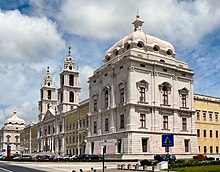
Elias governed the Order from the center, imposing his authority on the provinces (as had Francis). A reaction to this centralized government was led from the provinces of England and Germany. At the general chapter of 1239, held in Rome under the personal presidency of Gregory IX, Elias was deposed in favor of
The Observantist party took a strong stand in opposition to this ruling and agitated so successfully against the lax General that in 1247, at a chapter held in Lyon, France—where Innocent IV was then residing—he was replaced by the strict Observantist John of Parma (1247–57) and the Order refused to implement any provisions of Innocent IV that were laxer than those of Gregory IX.
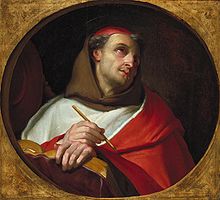
Elias, who had been excommunicated and taken under the protection of Frederick II, was now forced to give up all hope of recovering his power in the Order. He died in 1253, after succeeding by recantation in obtaining the removal of his censures. Under John of Parma, who enjoyed the favor of Innocent IV and Pope Alexander IV, the influence of the Order was notably increased, especially by the provisions of the latter pope in regard to the academic activity of the brothers. He not only sanctioned the theological institutes in Franciscan houses, but did all he could to support the friars in the Mendicant Controversy, when the secular Masters of the University of Paris and the Bishops of France combined to attack the mendicant orders. It was due to the action of Alexander IV's envoys, who were obliged to threaten the university authorities with excommunication, that the degree of doctor of theology was finally conceded to the Dominican Thomas Aquinas and the Franciscan Bonaventure (1257), who had previously been able to lecture only as licentiates.
The Franciscan
14th century
1274–1300
The successor to Bonaventure, Jerome of Ascoli or Girolamo Masci (1274–79), (the future
Persecution
Under Pope Clement V (1305–14) this party succeeded in exercising some influence on papal decisions. In 1309 Clement had a commission sit at Avignon for the purpose of reconciling the conflicting parties. Ubertino of Casale, the leader, after Olivi's death, of the stricter party, who was a member of the commission, induced the Council of Vienne to arrive at a decision in the main favoring his views, and the papal constitution Exivi de paradiso (1313) was on the whole conceived in the same sense. Clement's successor, Pope John XXII (1316–34), favored the laxer or conventual party. By the bull Quorundam exigit he modified several provisions of the constitution Exivi, and required the formal submission of the Spirituals. Some of them, encouraged by the strongly Observantist general Michael of Cesena, ventured to dispute the pope's right so to deal with the provisions of his predecessor. Sixty-four of them were summoned to Avignon and the most obstinate delivered over to the Inquisition, four of them being burned (1318). Shortly before this all the separate houses of the Observantists had been suppressed.
Renewed controversy on the question of poverty

A few years later a new controversy, this time theoretical, broke out on the question of poverty. In his 14 August 1279 bull Exiit qui seminat,[26] Pope Nicholas III had confirmed the arrangement already established by Pope Innocent IV, by which all property given to the Franciscans was vested in the Holy See, which granted the friars the mere use of it. The bull declared that renunciation of ownership of all things "both individually but also in common, for God's sake, is meritorious and holy; Christ, also, showing the way of perfection, taught it by word and confirmed it by example, and the first founders of the church militant, as they had drawn it from the fountainhead itself, distributed it through the channels of their teaching and life to those wishing to live perfectly."[27][28][29]
Although Exiit qui seminat banned disputing about its contents, the decades that followed saw increasingly bitter disputes about the form of poverty to be observed by Franciscans, with the Spirituals (so called because associated with the Age of the Spirit that
Influential members of the order protested, such as the minister general Michael of Cesena, the English provincial William of Ockham, and Bonagratia of Bergamo. In 1324, Louis the Bavarian sided with the Spirituals and accused the pope of heresy. In reply to the argument of his opponents that Nicholas III's bull Exiit qui seminat was fixed and irrevocable, John XXII issued the bull Quia quorundam on 10 November 1324[41] in which he declared that it cannot be inferred from the words of the 1279 bull that Christ and the apostles had nothing, adding: "Indeed, it can be inferred rather that the Gospel life lived by Christ and the Apostles did not exclude some possessions in common, since living 'without property' does not require that those living thus should have nothing in common." In 1328, Michael of Cesena was summoned to Avignon to explain the Order's intransigence in refusing the pope's orders and its complicity with Louis of Bavaria. Michael was imprisoned in Avignon, together with Francesco d'Ascoli, Bonagratia, and William of Ockham. In January of that year Louis of Bavaria entered Rome and had himself crowned emperor. Three months later he declared John XXII deposed and installed the Spiritual Franciscan Pietro Rainalducci as antipope. The Franciscan chapter that opened in Bologna on 28 May reelected Michael of Cesena, who two days before had escaped with his companions from Avignon. But in August Louis the Bavarian and his pope had to flee Rome before an attack by Robert, King of Naples. Only a small part of the Franciscan Order joined the opponents of John XXII, and at a general chapter held in Paris in 1329 the majority of all the houses declared their submission to the Pope. With the bull Quia vir reprobus of 16 November 1329,[42] John XXII replied to Michael of Cesena's attacks on Ad conditorem canonum, Quum inter nonnullos, and Quia quorundam. In 1330, Antipope Nicholas V submitted, followed later by the ex-general Michael, and finally, just before his death, by Ockham.[30]
Separate congregations

Out of all these dissensions in the 14th century sprang a number of separate congregations, or almost sects, to say nothing of the heretical parties of the
Clareni
The Clareni or Clarenini was an association of hermits established on the river Clareno in the march of Ancona by Angelo da Clareno (1337). Like several other smaller congregations, it was obliged in 1568 under Pope Pius V to unite with the general body of Observantists.
Minorites of Narbonne
As a separate congregation, this originated through the union of a number of houses which followed Olivi after 1308. It was limited to southwestern France and, its members being accused of the heresy of the Beghards, was suppressed by the Inquisition during the controversies under John XXII.
Reform of Johannes de Vallibus

This was founded in the hermitage of St. Bartholomew at Brugliano near
Unification

Projects for a union between the two main branches of the Order were put forth not only by the Council of Constance but by several popes, without any positive result. By direction of
All of the groups that followed the Franciscan Rule literally were united to the Observants, and the right to elect the
New World missions

The work of the Franciscans in New Spain began in 1523, when three Flemish friars—Juan de Ayora, Pedro de Tecto, and Pedro de Gante—reached the central highlands. Their impact as missionaries was limited at first, since two of them died on
Franciscans and the Inquisition
About 1236, Pope Gregory IX appointed the Franciscans, along with the Dominicans, as Inquisitors.[45] The Franciscans had been involved in anti-heretical activities from the beginning simply by preaching and acting as living examples of the Gospel life.[46] As official Inquisitors, they were authorized to use torture to extract confessions, as approved by Pope Innocent IV in 1252.[45] The Franciscans were involved in the torture and trials of Jews, Muslims, and other heretics [47] throughout the Middle Ages and wrote their own manuals to guide Inquisitors, such as the 14th century Codex Casanatensis for use by Inquisitors in Tuscany.[48]
Some 300,000 Jews, up to a quarter of the Spanish population, had to convert to Catholicism or flee Spain, or were killed in the Spanish Inquisition. The Inquisition spread to the new world during the Age of Discovery to root out heretics, leading further persecution and execution (e.g., Mexican Inquisition). [49]
Contemporary organizations
First Order
Order of Friars Minor
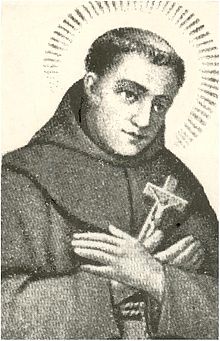
The Order of Friars Minor (OFM) has 1,500 houses in about 100 provinces and custodiae, with about 16,000 members. In 1897, Pope Leo XIII combined the Observants, Discalced (Alcantarines), Recollects, and Riformati into one order under general constitutions. While the Capuchins and Conventuals wanted the reunited Observants to be referred to as The Order of Friars Minor of the Leonine Union, they were instead called simply the Order of Friars Minor. Despite the tensions caused by this forced union the Order grew from 1897 to reach a peak of 26,000 members in the 1960s before declining after the 1970s. The Order is headed by a Minister General, who since July 2021 is Father Massimo Fusarelli. [50]
Order of Friars Minor Conventual
The Order of Friars Minor Conventual (OFM Conv.) consists of 290 houses worldwide with a total of almost 5000 friars. They have experienced growth in this century throughout the world. They are located in Italy, the United States, Canada, Australia, and throughout Latin America, and Africa. They are the largest in number in Poland because of the work and inspiration of Maximilian Kolbe.
Order of Friars Minor Capuchin

The Order of Friars Minor Capuchin (OFM Cap.) are the youngest branch of Franciscans, founded in 1525 by Matteo Serafini (Matteo Bassi, Matteo da Bascio), an Observant friar, who felt himself called to an even stricter observance of Franciscan austerity. With the support of the Papal Court, the new branch received early recognition and grew fast, first in Italy and after 1574 all over Europe and throughout the world. The Capuchins eventually became a separate order in 1619. The name Capuchins refers to the particular shape of the long hood or capuce; originally a popular nickname, it has become a part of the official name of the order. The order now exists in 106 countries all over the world, with around 10,500 brothers living in more than 1700 communities known as fraternities or friaries.
Second Order
Poor Clares
The Poor Clares, officially the Order of Saint Clare, are members of a
The Poor Clares follow the
Third Order

The Third Order of Saint Francis comprises people who desired to grow in holiness in their daily lives without entering monastic life. After founding the Friars Minor and seeing a need, Francis created a way of life to which married men and women, as well as the single and the secular clergy, could belong and live according to the Gospel.
Secular Franciscan Order
The
Third Order Regular
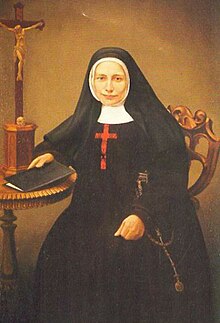
Within a century of the death of Francis, members of the Third Order began to live in common, in an attempt to follow a more
Among the men, the
After the formal recognition of the members of religious tertiary communities, the following centuries saw a steady growth of such communities across Europe. Initially, the women's communities took a monastic form of life, either voluntarily or under pressure from ecclesiastical superiors. The great figure of this development was Hyacintha Mariscotti. As Europe entered the upheavals of the modern age, new communities arose which were able to focus more exclusively on social service, especially during the immediate post-Napoleonic period which devastated much of Western Europe. An example of this is Mary Frances Schervier (1819–1876).
Third Order Regular in North America
This movement continued in North America as various congregations arose from one coast to another, in answer to the needs of the large emigrant communities that were flooding the cities of the United States and Canada.
The Third Order Regular of the
The Regular Tertiaries, officially the Third Order Regular of St. Francis of Penance, who operate the Franciscan University of Steubenville, follow a rule approved by Pope Leo X. Today this group is present in 17 countries: Italy, Croatia, Spain, France, Germany, Austria, US, India, Sri Lanka, South Africa, Brazil, Paraguay, Mexico, Peru, Sweden, Bangladesh, and the Philippines.[54]
Brothers and Sisters of Penance of St. Francis

The
Other tertiaries
- In 1435, Julius II. There are mendicant friars, contemplative nuns, and lay tertiaries.
- The Society of the Atonement, also known as Graymoor Friars and Graymoor Sisters, started in 1898 as a religious community in the Episcopal Church, and came into union with the Holy See in 1909.
- The Franciscan Friars of the Immaculate started in 1970, and became an institute with Pontifical Right in 1998. In that same year, the Franciscan Sisters of the Immaculate also became an institute with Pontifical Right. There are also Third Order Franciscan Sisters of the Immaculate, an offshoot of the Franciscan Tertiaries of the Immaculate.
Other Franciscan organizations
- The Community of the Franciscan Friars of the Renewal started in 1987, and the Franciscan Sisters of the Renewal in 1988.
- The Franciscan Missionaries of the Eternal Word started in 1987, and are now a Public Clerical Association of the Faithful.
- Franciscans International[55] is a Non-governmental organization (NGO) with General Consultative status at the United Nations, uniting the voices of Franciscan brothers and sisters from around the world. It operates under the sponsorship of the Conference of the Franciscan Family (CFF) and serves all Franciscans and the global community by bringing grassroots Franciscans to the United Nations forums in New York City and Geneva. It brings the spiritual and ethical values of the Franciscans to the United Nations and international organisations.
Other Christian traditions
One of the results of the
There is also an order of Sisters of St. Clare in the
There are further some small Franciscan communities within European
In addition, there are associations of Franciscan inspiration not connected with a mainstream Christian tradition and describing themselves as ecumenical or dispersed. The Companions of Francis Apostolic Religious Institute (CFARI), with its roots in independent Catholicism and Anglicanism, is a dispersed, egalitarian and ecumenical order of Franciscans based in Pasadena, California, with vowed members in California, Arizona and New Mexico. CFARI members live among the populations they serve and are self supporting in their ministry.
Distinguishing characteristics
Spirituality
Franciscan theology conforms to broader
Visions and stigmata
Among Catholic religious, Franciscans have proportionally reported higher ratios of
Contributions to biblical scholarship
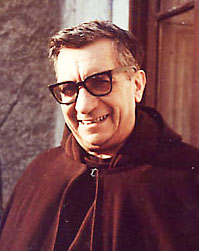
The Franciscans established the
The early efforts of another Franciscan, namely
Notable members
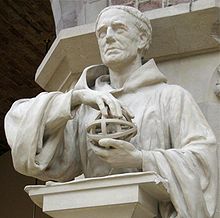
The Franciscan order boasts a number of distinguished members. From its first century can be cited the three great scholastics
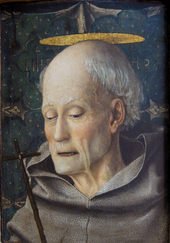
During the Middle Ages noteworthy members included Nicholas of Lyra, Biblical commentator Bernardino of Siena, philosopher William of Ockham, preachers John of Capistrano, Oliver Maillard, and Michel Menot, and historians Luke Wadding and Antoine Pagi.
In the field of Christian art during the later Middle Ages, the Franciscan movement exercised considerable influence, especially in Italy. The influence of Franciscan ideals shows in several great painters of the 13th and 14th centuries, especially
The early spiritual poetry of Italy was partially inspired by Francis himself, who was followed by
Other famous members of the Franciscan family include
During the "spiritual conquest" of New Spain, 1523–1572, the arrival of the first group of Franciscans, the
A modern notable member includes
See also
- Alonso de Posada (1626-?), Spanish missionary in New Mexico
- Association of Franciscan Colleges and Universities
- List of ministers general of the Order of Friars Minor
- Maria Antonio of Vicenza
- List of Franciscan saints
- Francis of Assisi The founder of Franciscans.
- Supply of Franciscan missions in New Mexico
References
Notes
- ^ a b c "Do the Franciscans have a coat or arms like many other religious orders?". Franciscan Friars: Province of Santa Barbara. Archived from the original on 2014-02-22.
- ^ a b c d "Order of Friars Minor (O.F.M.)".
- Encyclopedia Britannica. 2024-01-18. Retrieved 2024-02-25.
- ^ "Community of Francis and Clare". Community of Francis and Clare. Retrieved 2022-05-09.
- ^ "Franciscans, Religious Order". Encyclopaedia Britannica. 26 February 2013. Retrieved 7 January 2017.
- ^ "Saint Francis of Assisi, Italian Saint". Encyclopaedia Britannica. 26 February 2013. Retrieved 7 January 2017.
- ^ Bihl, Michael (1913). . In Herbermann, Charles (ed.). Catholic Encyclopedia. New York: Robert Appleton Company.
- Project MUSE 555981.
- ^ "All Saints of the Seraphic Order (Feast)". Catholic News Agency.
- ^ a b c d e "The rule of the Franciscan Order from the Medieval Sourcebook". Fordham.edu. 1999-09-22. Archived from the original on 2013-05-27. Retrieved 2013-06-16.
- ^ Paschal Robinson (1913). . In Herbermann, Charles (ed.). Catholic Encyclopedia. New York: Robert Appleton Company.
- ^ a b c d Paschal Robinson (1913). . In Herbermann, Charles (ed.). Catholic Encyclopedia. New York: Robert Appleton Company.
- ISBN 978-1576591956.
- ^ Annuario Pontificio per l'anno 2022 (Citta del Vaticano: Libreria Editrice Vaticana, 2022, pp. 1386–1387.
- ^ Paschal Robinson (1913). . In Herbermann, Charles (ed.). Catholic Encyclopedia. New York: Robert Appleton Company.
- ^ "Catholic Encyclopedia: Rule of Saint Francis". www.newadvent.org. Retrieved 2020-04-19.
- ^ Chesterton (1924), pp. 107–108
- ^ Galli (2002), pp. 74–80
- ^ a b Robinson, Paschal. "Elias of Cortona." The Catholic Encyclopedia Archived 2019-12-29 at the Wayback Machine Vol. 5. New York: Robert Appleton Company, 1909. 28 December 2019
 This article incorporates text from this source, which is in the public domain.
This article incorporates text from this source, which is in the public domain.
- ^ ""Brother Elia of Cortona ", Basilica Papale e Sacro convent di San Francesco in Assisi". Archived from the original on 2019-07-09. Retrieved 2019-12-29.
- ^ Greyfriars in England Archived 2008-07-05 at the Wayback Machine
- ^ "Franciscan Custody of the Holy Land". Christusrex.org. Archived from the original on 2013-06-15. Retrieved 2013-06-16.
- ^ Robinson, Paschal. "Brother Leo." The Catholic Encyclopedia Archived 2019-12-05 at the Wayback Machine Vol. 9. New York: Robert Appleton Company, 1910. 28 December 2019
 This article incorporates text from this source, which is in the public domain.
This article incorporates text from this source, which is in the public domain.
- ^ "Order of Friars Minor". newadvent.org.
- ^ "Exiit qui seminat". August 14, 1279. Archived from the original on July 3, 2019. Retrieved January 5, 2020.
- ^ Pope Nicholas III. "English translation 2". Retrieved 2013-06-16.
- ISBN 978-0-521-78291-3, p. 98.
- ^ "Origins of papal infallibility, 1150–1350: a study on the concepts of infallibility, sovereignty and tradition in the Middle Ages". Brill Archive. 1972. Retrieved 2013-06-16.
- ^ ISBN 978-0814655221. Retrieved 2013-06-16.
- ^ a b c d e f "History of the Franciscan Movement (3)". Christusrex.org. 2001-12-30. Archived from the original on 2013-05-22. Retrieved 2013-06-16.
- ^ Brooke, The Image of St Francis, p. 100
- ^ "Exivi de Paradiso – Pope Clement V". franciscan-archive.org. Archived from the original on January 12, 2012.
- ^ ISBN 978-0415939300. Retrieved 2013-06-16.
- ^ "John XXII, Quia nonnunquam". Archived from the original on 2014-06-06.
- ^ Brooke, p. 100
- ^ "John XXII, Ad conditorem canonum". Archived from the original on 2014-06-06.
- ^ Brooke, pp. 100–101
- ^ English translation 1 Archived 2013-06-06 at the Wayback Machine; English translation 2
- ^ "Tierney, p. 181". Retrieved 2013-06-16.
- ^ Brooke, p. 101
- ^ English translation 1 Archived 2012-01-12 at the Wayback Machine; English translation 2
- ^ "John XXII, Quia vir reprobus". Archived from the original on 2013-06-03.
- ^ Nájera, Guillermo Antonio Nájera, and William B. Taylor. "Franciscans", in The Oxford Encyclopedia of Mesoamerican Cultures, Oxford University Press, 2001.
- S2CID 144573605.
- ^ a b "Catholic Encyclopedia – Inquisition". New Advent. Archived from the original on October 26, 2007. Retrieved October 1, 2018.
- ^ Prudlo, Donald S., The Origin, Development, and Refinement of Medieval Religious Mendicancies (Brill, 2011) p. 144
- ^ "Witches in Religion". New Advent. Archived from the original on August 12, 2018. Retrieved October 1, 2018.
- ProQuest 1410824809. Retrieved 12 November 2022.
- ^ "The Auto-da-fé of Mexico City". Tablet Magazine.
- ^ "Br. Massimo Fusarelli, new OFM Minister General". ofm.org.
- ^ "Poor Clare Sisters". Archived from the original on 23 December 2016. Retrieved 9 December 2016.
- ^ "Third Order Regular". Francescanitor.org. 2013-05-12. Archived from the original on 2013-06-09. Retrieved 2013-06-16.
- ^ "The Franciscan Orders". FranciscansTOR.org. Franciscan Friars, TOR. Archived from the original on 2008-07-23. Retrieved 2007-07-10.
- ^ "Tertius Ordo Regularis Sancti Francisci | History". Archived from the original on 2018-12-19. Retrieved 2018-12-18.
- ^ "Franciscans International". Franciscans International. 2013-04-10. Archived from the original on 2013-07-23. Retrieved 2013-06-16.
- ^ "The Little Sisters of St. Clare". Archived from the original on 2010-09-02. Retrieved 2010-07-20.
- ^ For example, the OSFOC[permanent dead link].
- ^ "Living Simply". Franciscans in Action. Archived from the original on 26 January 2017. Retrieved 21 January 2017."Franciscan Spirituality". Conventual Franciscans. Archived from the original on 2017-01-03. Retrieved 2017-01-22.
- ^ "What is Franciscan Spirituality?". Saint Joseph Cupertino Fraternity, Secular Franciscan Order (OFS). 21 January 2014. Retrieved 29 January 2017.
- ^ Britannica Online Encyclopedia, Padre Pio Archived 2007-09-29 at the Wayback Machine
- ^ "Bartleby.com: Great Books Online – Quotes, Poems, Novels, Classics and hundreds more". Archived from the original on 2007-11-30.
- ^ "Padre Pio: Biography and Much More from". Answers.com. Archived from the original on 2013-05-12. Retrieved 2013-06-16.
- ^ "Studium Biblicum OFM". Archived from the original on 2018-10-05. Retrieved 2019-10-25.
- ^ Handbook of Middle American Indians, Vol. 13: Guide to Ethnohistorical Sources, Pt. 2. Howard F. Cline (ed.). Austin: University of Texas Press, 1973, pp. 142–143, 186–239, 256–275.
- ^ "Breaking In The Habit". YouTube. Retrieved 2023-01-18.
- ^ "Breaking In The Habit". Breaking In The Habit. Retrieved 2023-01-18.
- ^ Hayes, Maria (2019-02-20). "Priestly Ordination of Casey Cole Set for June 22". Holy Name Province. Archived from the original on 2022-12-02. Retrieved 2023-01-18.
- ^ Hayes, Maria (2018-04-03). "Casey Cole Writes First Book". Holy Name Province. Archived from the original on 2022-12-08. Retrieved 2023-01-18.
Sources
Books
- Aguiar de Castro, José Acácio (1997). O simbolismo da natureza em Santo António de Lisboa. Biblioteca humanística e teológica (in Portuguese). Vol. 11. Porto: Universidade Católica Portugesa, Fundação Eng António de Almeida. ISBN 978-9728386030. Retrieved 31 May 2016.
- Arnald of Sarrant (2010). Chronicle of the Twenty-Four Generals of the Order of Friars Minor. Translated by Noel Muscat. Malta: TAU Franciscan Communications. Retrieved 31 May 2016.
- Burr, David (2010). Spiritual Franciscans: From Protest to Persecution in the Century After Saint Francis. University Park, Pennsylvania: Pennsylvania State University Press. ISBN 978-0-271-04138-4. Retrieved 30 May 2016.
- Camps, Arnulf; McCloskey, Patrick (1995). The Friars Minor in China (1294–1955): Especially the Years 1925–55, Based on the Research of Friars Bernward Willeke and Domenico Gandolfi, OFM. History series. Vol. 10. Franciscan Institute Publications. ISBN 978-1-57659-002-7. Retrieved 30 May 2016.
- Carmody, Maurice (1994). The Leonine Union of the Order of Friars Minor: 1897. History series. Vol. 8. Franciscan Institute Publications. ISBN 978-1-57659-084-3. Retrieved 30 May 2016.
- Carmody, Maurice (2008). The Franciscan Story. Athena Press. ISBN 978-1-84748-141-2. Retrieved 30 May 2016.
- Cotter, Francis J. (1994). Roberta A. McKelvie (ed.). The Friars Minor in Ireland from their arrival to 1400. History series. Vol. 7. Franciscan Institute Publications. ISBN 978-1-57659-083-6. Retrieved 30 May 2016.
- Couturier, David B. (2007). The Fraternal Economy: A Pastoral Psychology of Franciscan Economics. Cloverdale Books. ISBN 978-1-929569-23-6. Retrieved 30 May 2016.
- Daniel, E. Randolph (1992). The Franciscan Concept of Mission in the High Middle Ages. Franciscan Pathways Series. Franciscan Institute Publications. ISBN 978-1-57659-065-2. Retrieved 30 May 2016.
- Esser, Kajetan (1970). Origins of the Franciscan Order. Franciscan Herald Press. ISBN 978-0-8199-0408-9. Retrieved 30 May 2016.
- Flood, David; Matura, Thaddée (1975). The Birth of a Movement: A Study of the First Rule of St. Francis. Franciscan Herald Press. ISBN 978-0-8199-0567-3. Retrieved 30 May 2016.
- Francis of Assisi (1982). Francis and Clare: The Complete Works. Classics of Western spirituality. Translated by Regis J. Armstrong and Ignatius C. Brady. New York: Paulist Press. ISBN 978-0809124466. Retrieved 30 May 2016.
- Francis of Assisi. Armstrong, Regis J.; Hellmann, J. A. Wayne; Short, William J. (eds.). Francis of Assisi: Early Documents. – 4 volumes
- The Saint. Francis of Assisi: Early Documents. Vol. 1 (2nd ed.). New City Press. 1999. ISBN 978-0-904287-62-2. Retrieved 30 May 2016.
- The Founder. Francis of Assisi: Early Documents. Vol. 2 (Illustrated ed.). New City Press. 2000. ISBN 978-1-56548-113-8. Retrieved 30 May 2016.
- The Prophet. Francis of Assisi: Early Documents. Vol. 3 (Annotated ed.). New City Press. 2001. ISBN 978-1-56548-114-5. Retrieved 30 May 2016.
- Index. Francis of Assisi: Early Documents. Vol. 4 (Annotated ed.). New City Press. 2002. ISBN 978-1-56548-172-5. Retrieved 30 May 2016.
- The Saint. Francis of Assisi: Early Documents. Vol. 1 (2nd ed.). New City Press. 1999.
- ISBN 978-0665656316. Retrieved 31 May 2016.
- Lawrence, C.H. (2015). Medieval Monasticism: Forms of Religious Life in Western Europe in the Middle Ages. Medieval World Series (4th ed.). Routledge. ISBN 978-1-317-50467-2. Retrieved 30 May 2016.
- Lynch, Cyprian J. (1988). A Poor Man's Legacy: An Anthology of Franciscan Poverty. Franciscan Pathways Series. Franciscan Institute. ISBN 978-1-57659-069-0. Retrieved 30 May 2016.
- MacVicar, Thaddeus (1963). The Franciscan Spirituals and the Capuchin Reform. History series. Vol. 5. Franciscan Institute Publications. ISBN 978-1-57659-086-7. Retrieved 30 May 2016.
- Merlo, Grado Giovanni (2009). In the Name of St. Francis: A History of the Friars Minor and Franciscanism until the Early Sixteenth Century. Translated by Robert J. Karris and Raphael Bonanno. Franciscan Institute Publications. ISBN 978-1-57659-155-0.
- Moorman, John Richard Humpidge (1983). Medieval Franciscan houses. History series. Vol. 4. Franciscan Institute Publications. ISBN 978-1-57659-079-9. Retrieved 30 May 2016.
- Moorman, John Richard Humpidge (1988). A History of the Franciscan Order: From Its Origins to the Year 1517. Franciscan Herald Press. ISBN 978-0-8199-0921-3. Retrieved 30 May 2016.
- Osborne, Kenan B. (1994). The History of Franciscan Theology. Franciscan Institute Publications. ISBN 978-1-57659-032-4. Retrieved 30 May 2016.
- Senocak, Neslihan (2012). The Poor and the Perfect: the rise of learning in the Franciscan order, 1209–1310. Ithaca, New York: Cornell University Press. ISBN 978-0-8014-6471-3. Retrieved 30 May 2016. – Shows how Franciscans shifted away from an early emphasis on poverty and humility and instead emphasized educational roles
- Sharp, Dorothea Elizabeth (1966). Franciscan Philosophy at Oxford in the Thirteenth Century. British Society of Franciscan Studies. Vol. 16. Oxford University Press. ISBN 978-0-576-99216-9. Retrieved 30 May 2016.
- Thomson, Williell R. (1975). Friars in the Cathedral: The First Franciscan Bishops 1226–1261. Studies and texts. Vol. 33. Toronto: Pontifical Institute of Mediaeval Studies. ISSN 0082-5328. Retrieved 31 May 2016.
- White, Joseph M. (2004). Peace and good in America: a history of Holy Name Province Order of Friars Minor, 1850s to the present (Illustrated ed.). Holy Name Province OFM. ISBN 978-1-57659-196-3. Retrieved 30 May 2016.
Articles
- Halevi, Masha (2012). "Between Faith and Science: Franciscan Archaeology in the Service of the Holy Places". Middle Eastern Studies. 48 (2): 249–267. S2CID 144234605.
- Schmucki, Oktavian (2000). "Die Regel des Johannes von Matha und die Regel des Franziskus von Assisi. Ähnlichkeiten und Eigenheiten. Neue Beziehungen zum Islam". In Cipollone, Giulio (ed.). La Liberazione dei 'Captivi' tra Cristianità e Islam: Oltre la Crociata e il Gihad: Tolleranza e Servizio Umanitario. Collectanea Archivi Vaticani. Vol. 46. Vatican City: Archivio Segreto Vaticano. pp. 219–244.
External links
First Order
- Order of Friars Minor (official website)
- Order of Friars Minor Capuchin (official website)
- Order of Friars Minor Conventual (official website)
Second Order
- Order of Saint Clare. Archived 2021-09-16 at the Wayback Machine (official website).
Third Order
- Secular Franciscan Order. Archived 2014-08-30 at the Wayback Machine (official website).
- Third Order Regular of St. Francis of Penance (official website)
Research resources
- Online guide to the Academy of American Franciscan History Microfilm Collection, 1526–1972, The Bancroft Library
- Franciscan authors, 13th – 18th century Archived 2014-09-02 at the Wayback Machine
- Digital Franciscans Archived 2014-08-10 at the Wayback Machine – extensive list of Franciscan internet resources
- Luke Wadding Papers: correspondence relating to Fr Luke Wadding OFM and the Irish Friars Minor at St. Isidore's College, Rome, on ecclesiastical and political matters; and concerning his interests as historian of the Franciscan Order. A UCD Digital Library Collection.
- Lewis E 253 Manuscript of an evangelist and prebendary of the minor orders at OPenn
- Lewis E 258 Life of Holy Francis and his companions at OPenn
- 14 Regulae ordinis fratrum minorum Franciscani etc. at OPenn
- Franciscan Society Collection at University College London
Media
- Greyfriars and Blackfriars, BBC Radio 4 discussion with Henrietta Leyser, Anthony Kenny & Alexander Murray (In Our Time, November 10, 2005)

